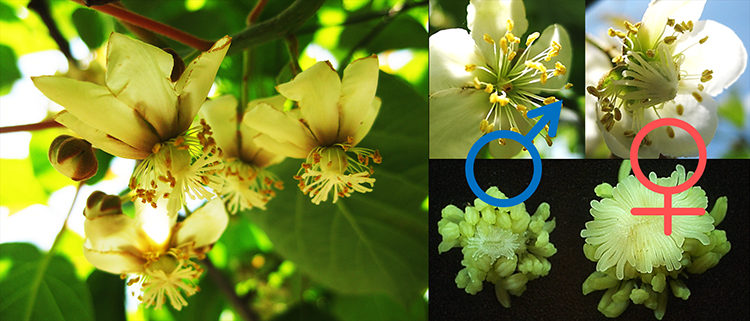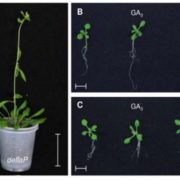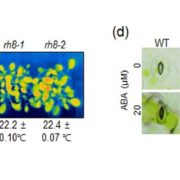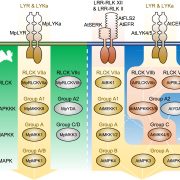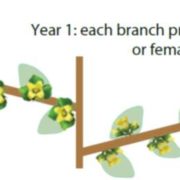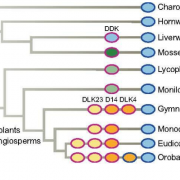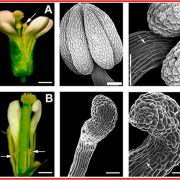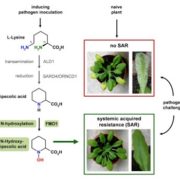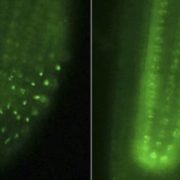Gender Identity in Kiwifruit
Akagi et al. identify a gender determining gene in kiwifruit. The Plant Cell (2018). https://doi.org/10.1105/tpc.17.00787
By T. Akagi, I. M. Henry, H. Ohtani, T. Morimoto, K. Beppu, I. Kataoka, and R. Tao
Background: In flowering plants, hermaphroditism, or the presence of both male and female organs in each flower, represents the most common state, and only a few percent of species have evolved sex-specific individuals (called dioecy). Dioecy in plants has evolved independently in different lineages and the genes involved in this differentiation are just starting to be identified in a few species. Kiwifruit, in the genus Actinidia, is a dioecious woody vine and a major fruit crop worldwide. Actinidia species typically have a XY (heterogametic male) sex-determining system, the X and Y chromosomes are very (but not completely) similar, and what is different between the two is expected to include the genes responsible for sex determination.
Question: We wanted to identify the gene or genes responsible for the presence of separate sexes in Actinidia and start to understand how they affected flower development to result in separate male and female flowers.
Findings: We found one promising candidate gene, which is a cytokinin signaling gene named Shy Girl (SyGI) located on the Y-chromosome. It is specifically expressed in female flower organs (carpels) to suppress their development, resulting in male flowers. We investigated the origins of Shy Girl and found another gene very similar to Shy Girl elsewhere in the Actinidia genome, of which divergence occurred approximately 20 millions years ago. These two copies then evolved independently and one became Shy Girl by developing a new expression pattern, resulting in a new role as a repressor of female function. These results provide an example of how a lineage-specific duplication event can provide a new template for the evolution of new functions that affect key biological processes, such as sex determination.
Next steps: Kiwifruit Y-chromosomes are thought to carry two sex determining factors: one that suppresses female function (Shy Girl) and one that enhances male function. We are now working to identify the second sex-determining gene. Assembling these two factors may also provide clues as to how other plants have evolved independent sex determination systems.
Akagi et al. (2018). A Y-encoded Suppressor of Feminization Arose via Lineage-specific Duplication of a Cytokinin Response Regulator in Kiwifruit. Plant Cell Apr 2018, 30: 780-795 DOI https://doi.org/10.1105/tpc.17.00787


